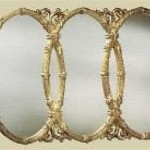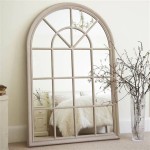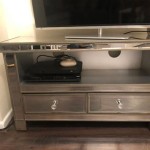Two-Way Mirror TVs
Two-way mirror TVs represent a fascinating intersection of technology and interior design. These devices seamlessly blend into a room's aesthetic as a seemingly ordinary mirror, transforming into a vibrant television screen on demand. This dual functionality allows for both an elegant decorative element and a practical entertainment solution.
Key Features of Two-Way Mirror TVs
Several key features distinguish two-way mirror TVs from conventional televisions and standard mirrors:
- Dielectric Mirror Technology: The core of a two-way mirror TV lies in its specialized dielectric mirror. This type of mirror partially reflects light while allowing some light to pass through, enabling the concealed display to be visible.
- Concealed Display: The television screen itself is hidden behind the dielectric mirror, remaining invisible when turned off. This allows the unit to function as a regular mirror, reflecting the room and blending seamlessly into the décor.
- Mirror Finishes: Two-way mirror TVs are available in various mirror finishes, allowing for customization to match existing interior design schemes. Finishes may include traditional silver, bronze, or even tinted options.
- Smart TV Functionality: Many models incorporate smart TV features, providing access to streaming services, apps, and internet browsing capabilities.
Functionality and Operation
The operation of a two-way mirror TV is straightforward and user-friendly. The transition between mirror and TV modes is typically controlled via a remote control or integrated smart home systems.
- Mirror Mode: When inactive, the two-way mirror TV functions as a standard mirror, reflecting light and providing a conventional reflective surface.
- TV Mode: Activating the TV sends a signal to the concealed display. The image projected from the display passes through the dielectric mirror, becoming visible to the viewer.
- Light Transmission: The quality of the displayed image is influenced by the amount of light passing through the mirror. Ambient lighting conditions can affect the clarity and vibrancy of the television picture.
Installation and Placement Considerations
Proper installation is crucial for optimal performance and aesthetics. Several factors should be considered when planning the placement of a two-way mirror TV:
- Ambient Lighting: The surrounding light levels significantly impact image quality. Brighter rooms may require a higher-brightness display for optimal viewing.
- Viewing Angle: Similar to regular televisions, two-way mirror TVs have optimal viewing angles. Placement should ensure comfortable viewing from intended seating areas.
- Wiring and Connectivity: Concealing wiring and cables is essential for maintaining the clean, integrated appearance. Planning for cable management during installation is vital.
- Wall Mounting: Most two-way mirror TVs are designed for wall mounting, similar to traditional flat-screen televisions. Professional installation is often recommended.
Applications and Benefits
The versatility of two-way mirror TVs lends itself to a variety of applications in various settings:
- Residential Use: In homes, they can be integrated into bathrooms, bedrooms, and living areas, providing entertainment without disrupting the room's aesthetic when not in use.
- Commercial Applications: Hotels, gyms, and retail spaces can utilize two-way mirror TVs to display information, advertisements, or entertainment while maintaining a stylish ambiance.
- Space Saving: The dual functionality of these devices offers a space-saving solution by combining the utility of a mirror and a television.
- Aesthetics: Two-way mirror TVs provide a sleek and modern aesthetic, enhancing the overall design of a space.
Technology and Manufacturing
The manufacturing process of two-way mirror TVs involves specialized techniques and components:
- Dielectric Mirror Production: Creating the dielectric mirror requires precision coating techniques to achieve the desired balance of reflection and light transmission.
- Display Integration: Seamlessly integrating the display behind the mirror requires careful engineering and assembly.
- Quality Control: Rigorous testing ensures the quality and durability of the final product, including image clarity and mirror reflectivity.
Considerations for Purchase
Several factors should be considered before purchasing a two-way mirror TV:
- Size and Aspect Ratio: Available sizes and aspect ratios vary, and selection should be based on the intended space and viewing preferences.
- Mirror Finish: The chosen mirror finish should complement the existing décor and style of the room.
- Display Technology: Different display technologies (LED, LCD, OLED) offer varying levels of picture quality, contrast, and energy efficiency.
- Smart TV Features: The availability of smart TV features should align with the user's needs and preferences for streaming content and app access.
- Budget: Two-way mirror TVs typically command a premium price compared to standard televisions, so budget considerations are important.

Television Framed Frameless Dielectric Mirror Tv

Two Way Mirror Flat Screen Tv Framing 5280 Custom

How To Make A Mirror Tv Step By Instructions

Dielectric Mirror Order Standard Size To Fit Your Tv

Tv Behind Two Way Mirror High Def Forum Your Definition Community Resource Wall Mounted

Tv Mirror Samples

Dielectric Mirror Tv On Treehouse Masters Two Way Mirrors

China Two Way Mirrors Factory 6mm Mirror Glass S Whole 2

I M Obsessed With Hiding Any Of Our Tvs Behind A Two Way Mirror This Seems Like Great To Do It Without Having Kincaid Furniture Framed Tv

Tv Ideas Hide Your Flat Screen With Storage Tls








